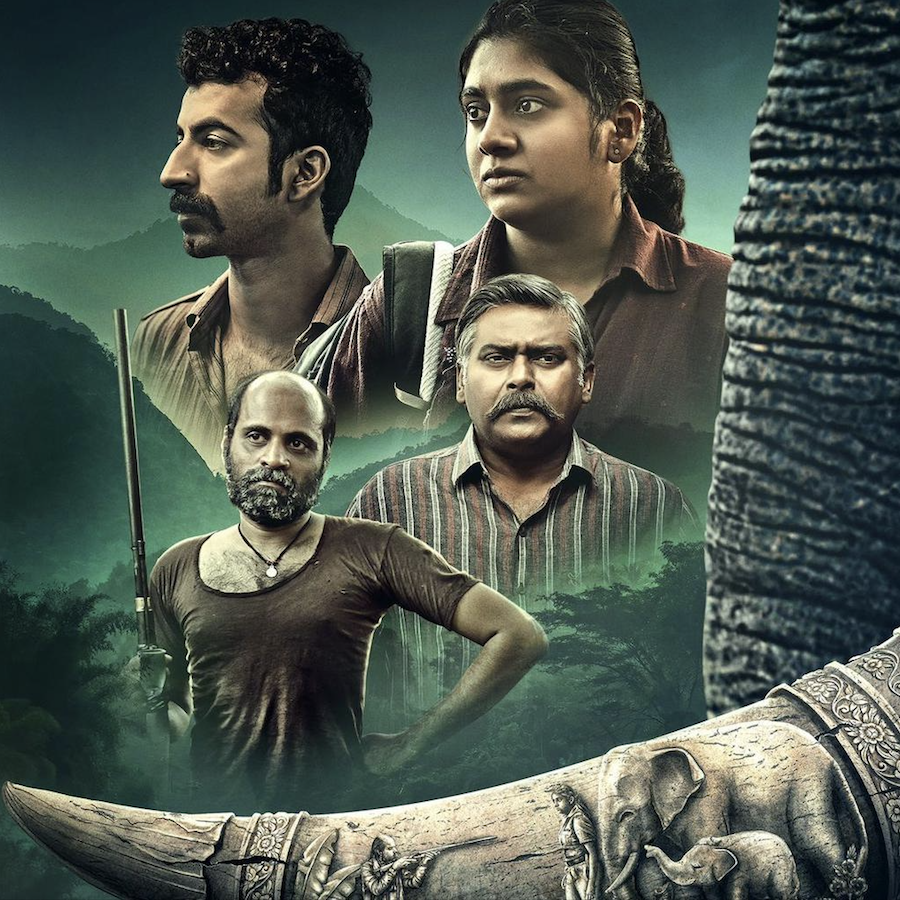Sabari Venu’s @meancurry is a hit, with its pun-filled humour and political comics
Sabari Venu, a design graduate and staunch believer in the power of puns, says his Instagram account @meancurry is where he breeds his love for chalu (lame jokes) and puns! His Instagram handle speaks volumes about his love for wordplay— a ‘mean curry’ that translates to ‘fish curry’ in Malayalam or curry (in this case, himself) that is mean. Sabari, in a funny slant, calls himself a ‘sadist’ as he says he “enjoys the thought of people suffering his humour.” However, what can be inferred is that his 16,300 followers on Instagram are ‘suffering’ happily. His first-ever comic strip depicts an investigation scene where a man dies as a coconut falls on his head and the investigator describes it as a Thenga Kola, a play on the word ‘kola’ which means both bunch as well as murder. There’s another one in which a dog dons a dummy painting of Claude Monet’s Water Lily Pond around its neck and Sabari eloquently calls this frame, ‘Naayinte Monet’, which translates to ‘Dog Monet’. He is blatant in creating comics that debate the raging political news of the times. It was a game-changer for him when a parody of Shashi Tharoor requesting for votes during the 2019 Lok Sabha Elections picked up comments from the man himself on social media. “For those who enjoy bilingual Malayalam/English puns, there’s no better place than @behance “mean curry” comics!” Tharoor commented. The comic says Vote Tharoo(R) which reads as ‘give me a vote’ in Malayalam.
Originally from Thiruvananthapuram, Sabari’s love for puns started in his childhood and is inspired by a family that loves to crack jokes.“My family and I have been cracking punny jokes for a long time now and to add to that, I was surrounded by a lot of friends with a similar passion towards wordplay. So puns come to me almost instinctively now,” he says. Over time, Sabari has grown confident about his comics and his audience. “Initially, I could never imagine myself being considered an artist. Neither could I believe I could match the skills of established artists. But eventually, I’ve come to realise that all that matters is to enjoy the process of doing what you do without comparing and fear of judgment,” says Sabari.
In a defense of his political comics, he voices his right to expression as an artist and more so, a citizen. Sabari has never stopped himself from posting funny stuff about political leaders and situations in the country. However, he does address the issues he has to face as an artist. “More than challenges, it’s the fear of the repercussions. We should not be living in a society where an artist is threatened and lives in fear, for criticising people in power. The trolls are ruthless and can be emotionally exhausting to deal with. The simple solution which I have found to be very effective is to avoid engaging and to block liberally. The second anyone resorts to personal insults, derogatory remarks, or anything crass I do not think twice before blocking them,” says Sabari.
Besides comics, Sabari has his finger in a few pies as he makes it clear that he does not want to restrict himself to his comic page, @meancurry. Animation, illustration, photography and playing around with clay are some of the other things he does. “The comics format has worked out well for visualising my puns and certain ideas for Mean Curry. Even here, I have made use of animations to execute certain ideas,” he says. He stresses that illustrations and comics are a way for him to address the issues that concern him. “It is a responsibility I have felt as an artist to speak up about the current political scenario, especially at a time when speaking up is considered to be seditious and our freedom of expression is under threat.”
The inspirations for his comics are many, including the independent artists he was introduced to during college and an animation film called Whose Reality by Vaibhav Kumaresh. He particularly credits a series of comic books he used to read as a child, Asterix and Obelix in which there is an unbeatable wordplay that eventually drove him towards the habit of punning. Considering the social underpinnings in his comics, characters and representation, Sabari defines them as the important elements in his process of creation, which, he adds, is something he respects in the works of other artists. With no more than 38 posts uploaded on his page since 2017, it’s definitely ‘quality over quantity’ for Sabari, who is a freelancer now at Bengaluru. He credits social media for his growth as an artist and says he still has so much to learn and a long way to go.
Trivia
When not creating art, I
Trek, play football or blob around
If not an artist, I would have become
A wildlife biologist/photographer
Comic pages I follow on Instagram
Green Humour, Extra Fabulous comics, Goodbad Comics, Sanitary Panels, N Ponnappa, BPB, tilly.krishna
A non-artist personality I love
Atishi Marlena
I am the most productive
After midnight


